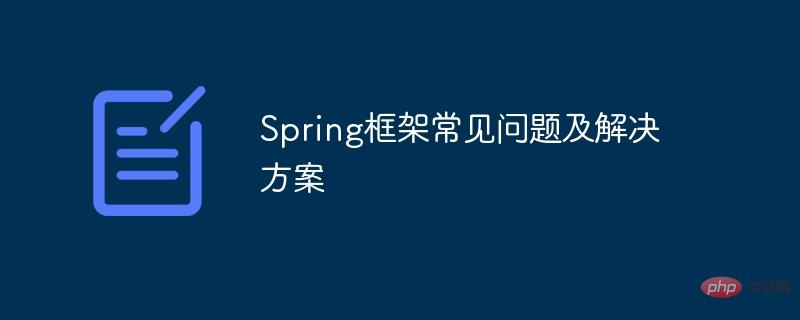
Frequently asked questions about Spring framework: Bean cannot be injected: Make sure that the bean is registered, correctly defined, the dependency is registered, and the scope is correct. Circular dependencies: Use @Lazy annotation for lazy initialization, use factory bean methods, and consider using AspectJ automatic proxying. Configuration errors: Check context files, bean registration, and bean property settings. Performance issues: Use performance analysis tools to identify bottlenecks, avoid creating unnecessary beans, use caching, and monitor memory usage. Transaction management issues: Correctly configure the transaction manager, set transaction propagation behavior, handle transaction exceptions, and provide rollback mechanisms.

Spring Framework is a popular Java application framework that simplifies application development. There are some common issues you may encounter when using Spring. The following are some common problems beserta solutions:
Problem:When trying to inject a bean, a null pointer exception or bean not found error occurs .
Solution:
Problem:Two or more beans depend on each other, resulting in circular dependency.
Solution:
Problem: The Spring application cannot start and displays a configuration error.
Solution:
Problem: Spring application performance is poor or there is a memory leak.
Solution:
Problem: Transactions cannot work properly, or transaction rollback occurs.
Solution:
Suppose you want to create a simple Spring MVC application, but encounter the problem that beans cannot be injected.
Code example:
@Controller
public class MyController {
@Autowired
private MyService service;
...
}In this example, the service bean cannot be injected into MyController. In order to resolve this issue, you need to check the following:
By following these steps and double-checking your configuration, you can resolve common issues common with the Spring Framework and ensure your application is running properly.
The above is the detailed content of Spring framework common problems and solutions. For more information, please follow other related articles on the PHP Chinese website!




